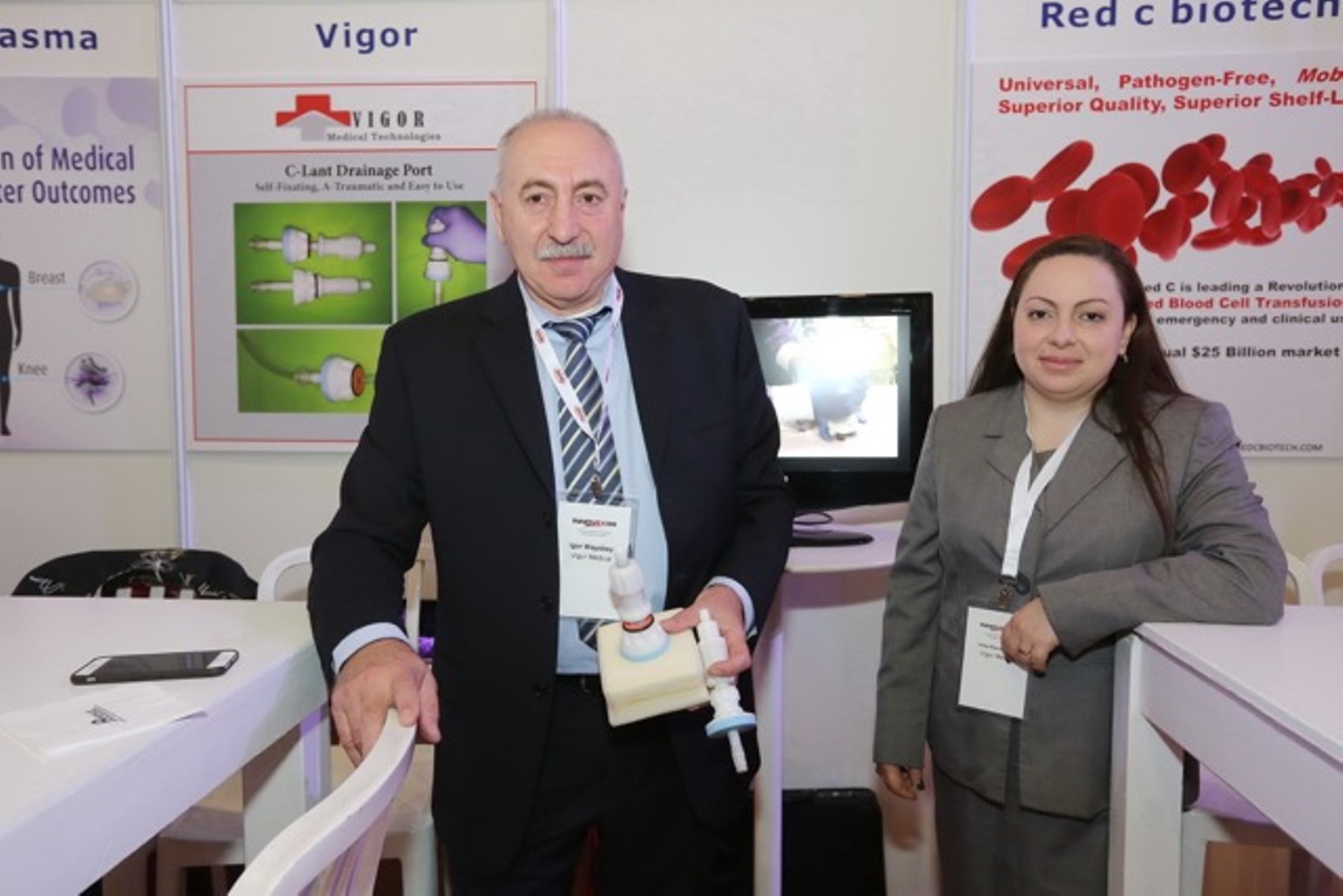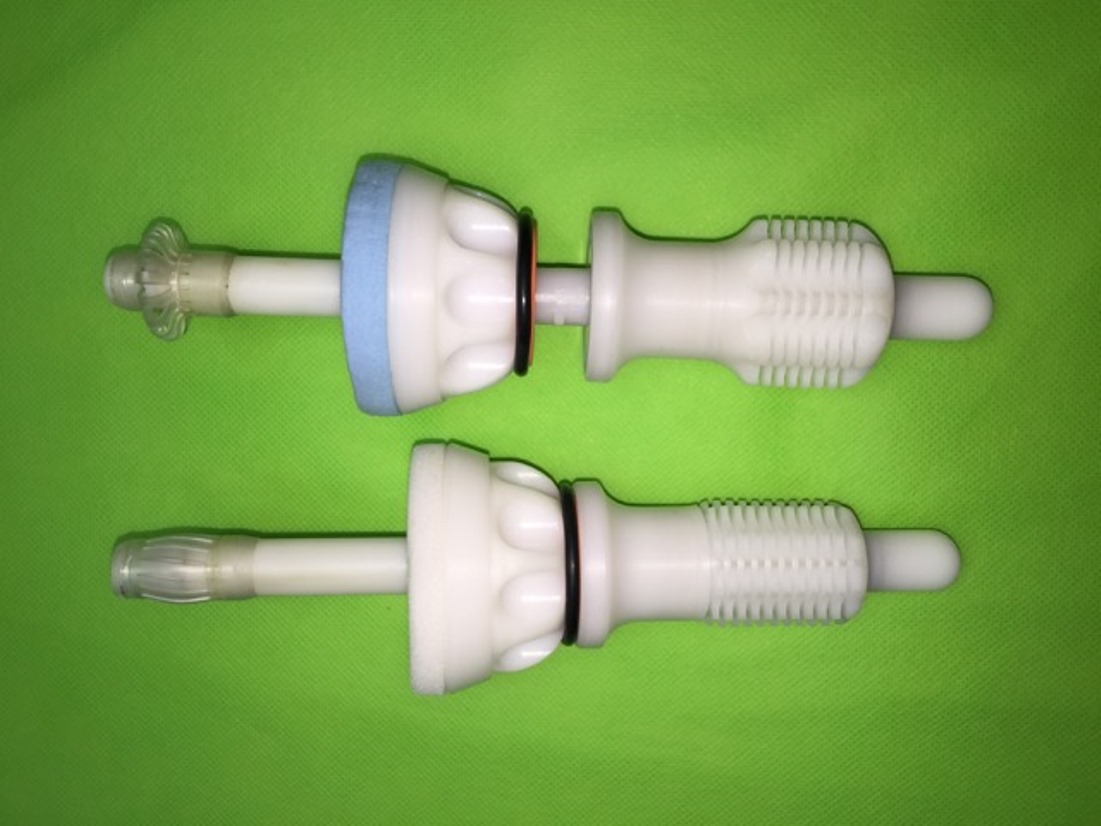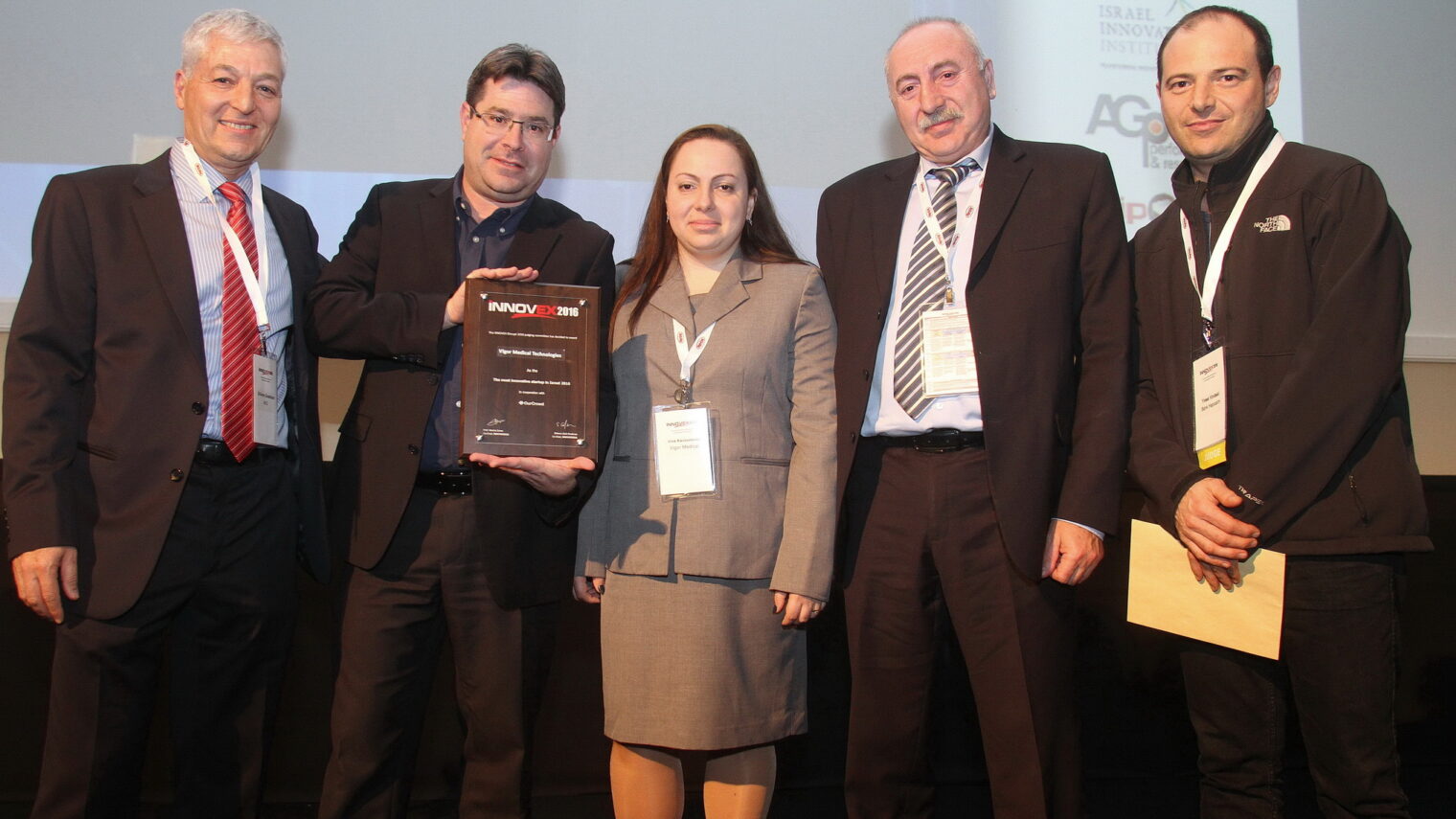A father-daughter team from Israel has invented a lifesaving device that could revolutionize treatment of chest trauma, the No. 1 cause of accidental death worldwide.
Technion graduate Irina Kavounovski and her father, mechanical engineer Igor Vaysbeyn, founded Vigor Medical Technologies with Florida-based biomed investor Dr. John Abeles to develop and commercialize the C-Lant self-fixation sealing device for civilian and military medics to prevent lung and heart collapse before a chest trauma patient reaches the hospital.
Vigor won the Innovex Disrupt contest at the February 3 iNNOVEX2016 conference in Israel, whose sponsors and partners included multinationals such as Google and Israeli crowdfunding VC OurCrowd.
OurCrowd now seeks to raise $1 million for Vigor Medical Technologies, which was the first to be incubated at the T Factor technology-transfer program for Technion graduates and more recently completed the MassChallenge accelerator in Boston.
Vigor also was one of eight finalists out of more than 250 candidates at Innovation Days, a prestigious European pharma, biotech and medtech competition held in October 2015 in Paris.

Kavounovski tells ISRAEL21c that Magen David Adom, Israel’s emergency response network, is interested in the product and the company also made strategic contacts in the United States through MassChallenge.
C-Lant provides a unique answer to the need for a better treatment of chest trauma, says Kavounovski, who has degrees in chemical engineering and business and managed medical device companies for 13 years before cofounding Vigor in July 2014.
There are currently three methods first-responders can use to treat chest (thoracic) trauma – caused, for example, by a stab or gunshot wound. The danger is that the lungs can collapse as air leaks out, and organs inside the thorax can shift. If treated surgically within an hour, the injured person has an 80 percent chance of survival.
One emergency approach is a sealant to prevent leakage of liquid and air from the punctured lung. This is difficult to fixate in the field because the wound is often covered with dirt, blood, fabric or hair.
A more common tactic is to insert a thin needle to perforate the second lung in order to equalize thoracic pressure and temporarily prevent shifting of organs until the patient gets to the hospital.
The third and most effective method available today is inserting a large drainage tube in the chest, but this must be done by a doctor in a minor surgical procedure requiring sterile conditions, surgical instruments and local anesthesia.
“Our solution takes away the need for all of the above,” says Kavounovsky.
“It’s a very simple device that self-sticks from the inside and outside without tape or sutures, so you don’t need additional accessories. It can be inserted through the wound or through its own opening made by the sharp point on its tip. As soon as the tip perforates the layers of the thoracic wall it jumps back automatically into the handle, like an EpiPen, so there is no trauma to the patient and it immediately seals the wound.”
The one-size-fits-all device automatically adjusts to the anatomy of the specific patient and has an antibacterial coating to prevent infection.
“The use of a regular thoracic tube drain that is common today has a lot of potential problems and I think those problems can be readily and easily solved by the C-Lant device,” said Dr. Itzhak Koifman, head of the intensive care unit at Ziv Medical Center in Safed, where Vigor engineers measured multiple patient CT scans to determine the average wall thickness in the thorax before designing their prototype.
Not only for chest trauma
C-Lant could be used to treat different types of trauma, adds Kavounovsky, and it provides a handy port through which medical personnel can insert tubes, catheters, tiny cameras or other instruments to treat the patient without causing further trauma.
The device was developed with input from Israeli, American and German specialists in civilian and military thoracic trauma, general surgery and pulmonology, and they participate in all stages of testing.
Vigor successfully tested C-Lant on animal thorax tissues and then on large animals at the Hebrew University of Jerusalem in cooperation with the IDF, which is one of the device’s potential buyers.
“We did more than 30 tests to confirm feasibility and utility for different types of trauma,” says Kavounovsky.

The company plans its first clinical trial toward the end of this year to meet requirements for CE marketing approval in Europe. This trial will be in thoracic surgery rather than emergency medicine.
“Our device can be used as a port after major thoracic and abdominal surgeries because you need to drain liquid that has accumulated,” Kavounovsky explains.
The company has an office in Nesher near the Technion campus in Haifa, and a small workshop in Haifa where the prototypes are developed, manufactured and mechanically tested.
For more information, click here.














